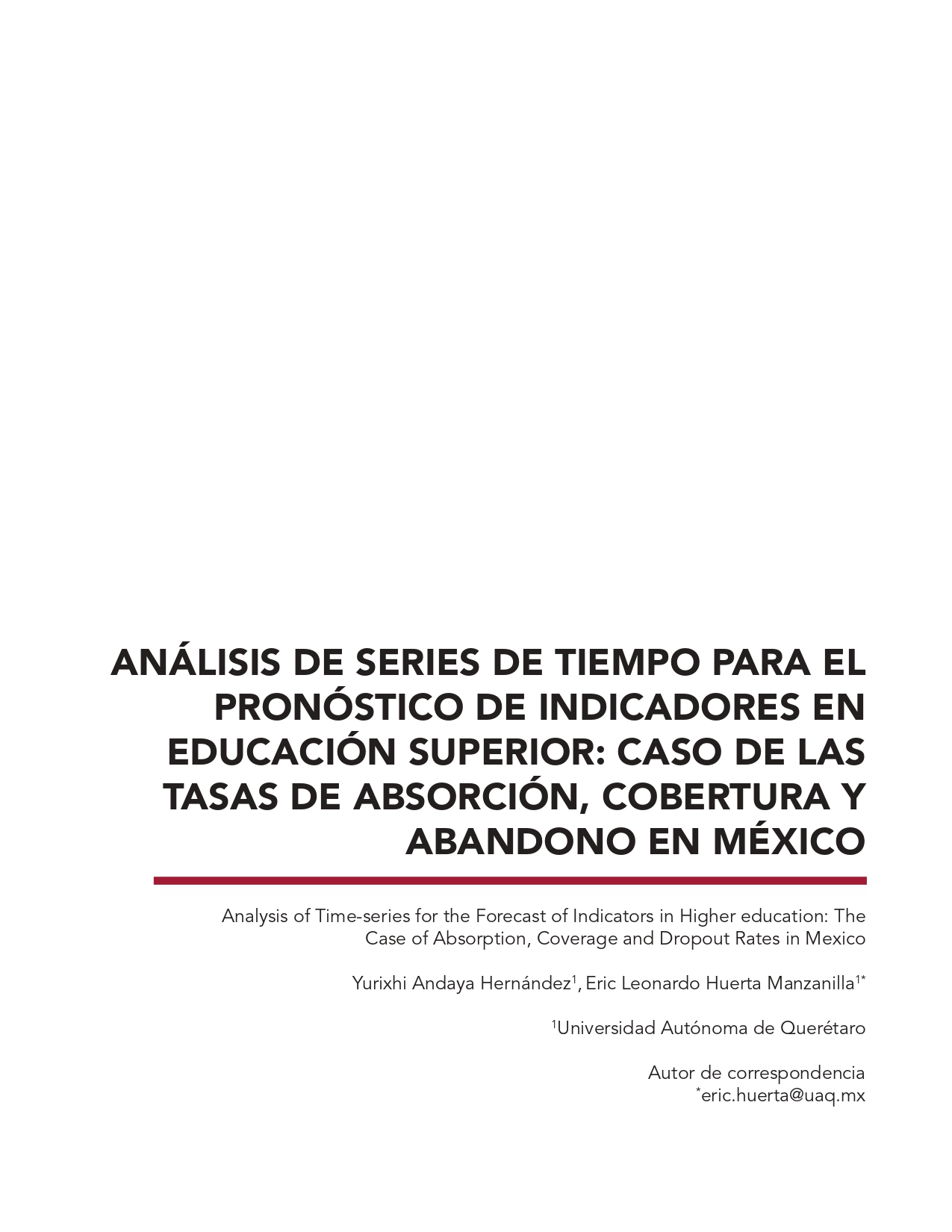Abstract
In Mexico, the rates of absorption, coverage and dropout are important indicators of the ability of the education system to attend to the school-age population, at the different educational levels. In turn, these rates are part of the indicators of the “school trajectory” and, due to the phenomena that each of them reflects, it is expected that the evolution over time of absorption and coverage will be in constant growth, while the dropout rate is expected to decrease. In the last decades, there has been a sustained increase in the coverage rate at the higher level, while the absorption rate seems to decrease, and the dropout presents constant ascents and descents. Based on historical data from previous 24 years, it is intended to forecast the levels that such rates could reach during the next 3 years. The ARIMA models were used because of their proven ability to project complete and accurate forecasts. The aim of this work is to show the usefulness and relevance of statistical forecasting tools to project the behavior of phenomena in the educational field. From the forecast made, the data suggests that a sustained growth is expected for the next 3 years for the coverage rate; while absorption and abandonment rates show fluctuations in their behavior, so it is unclear whether they will increase or decrease in this same period.
This work is licensed under a Creative Commons Attribution-NonCommercial 4.0 International License.

